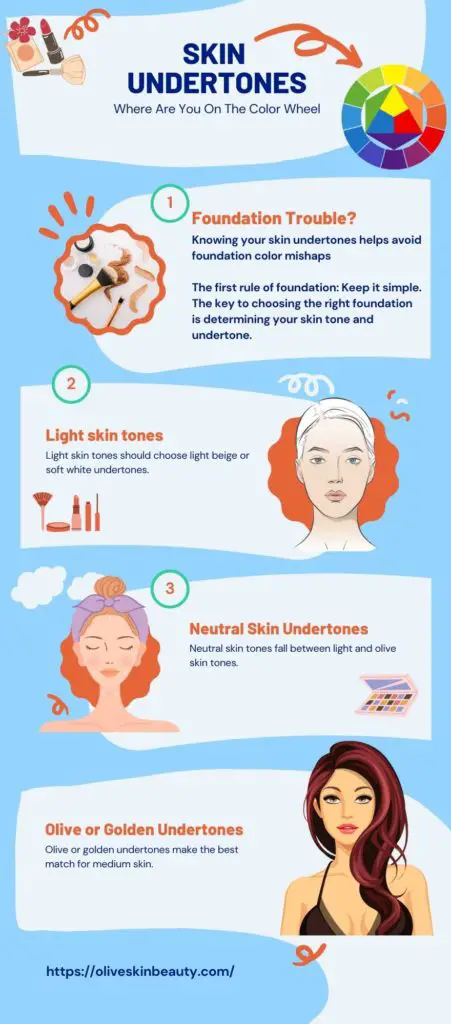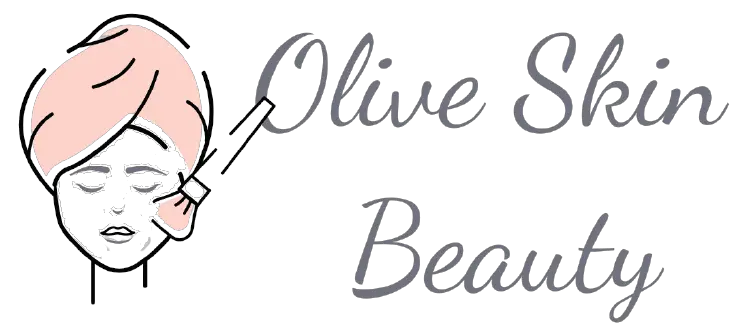If you aren’t sure what your skin undertone is, you are not alone. Millions of people are confused about which category they fall into, or if their undertone is even detectable at all.
Skin Undertones are the base colors of your skin, most people think they are how easily you burn in the sun; however; it is not true. It is solely used to match up your foundation/concealer/powder color.
Below is a visual explanation.

Below is a visual explanation.
By looking at this chart you can learn what your skin undertone is.
Undertones are broken down into three categories: Cool/Light, Warm, and Neutral. Your skin tone will either lean more to the cool or warm side of things. You can also be neutral which means that your skin looks good in colors from both the warm and the cool side, or if you have a neutral undertone that means that it is hard to tell what color your skin tone is.
If you wear foundation, concealer, or powder and they do not match your undertones then it will look off and unnatural. If you’ve ever worn a foundation that looks great in the store, but once you get home and look in the mirror it doesn’t match, then your undertones are off.
The trick that makeup artists use for determining skin undertone is to put certain colors on either side of the face; one warm and one cool. Then they look at which color looks better.
Women with olive skin and in their twenties and thirties usually have a warm undertone. Women with pink undertones, in their twenties and thirties, can also be considered warm if they look better in gold jewelry.
The great thing about olive skin is that it looks good in both warm and cool colors because olive skin has both warm and cool undertones.
Women with the pink color tone usually have a cool undertone. Women with beige, light brown, or red hair are often considered to have neutral-toned skin that is neither warm nor cool.
How do you tell if you have warm or cool undertones?
Did you know that your undertones can affect what colors look good on you? If you have a warm undertone, then it means that your skin looks best in warm colors. This means oranges and yellows will look great on you.
If instead, you have a cool undertone, it means that your skin looks best in cool colors. This would mean purples and greens would be the most flattering for you.
Knowing this information is so important when shopping for clothes or picking out makeup because if not done correctly, it could lead to looking washed out from the wrong shade of foundation.
Luckily though there are some easy tricks to find out if you have a warm or cool undertone:
Warm: If the base tone of your skin is yellow or gold, you have warm undertones.If you look better in yellow gold jewelry and also wear warmer colors, such as reds and oranges, you have warm undertones.
Cool: If the base tone of your skin is blue or pink, you have cool undertones. If you usually look better in silver jewelry and blues, purples and pinks are flattering on you, you have cool undertones.
Neutral: If your skin tone can go either warm or cool, then it means that you have a neutral undertone. You will be able to wear both colors, but pink colors may make your skin look dull and grayish while yellow colors make you look sickly.
If your undertone is hard to detect and you aren’t sure where you fall, the easiest way to tell is by looking at your veins. If they look green, then you’re warm-toned; if they look more blueish then you’re cool-toned.
Which skin tone is most attractive?
For years, scientists and psychologists alike have been trying to determine which skin tone is truly the most attractive. It’s a difficult question because it all comes down to personal preference.

There are some people who believe that each person has their own unique beauty that should be embraced, while others believe that certain features of an individual’s appearance make them more physically appealing than others.
For instance, darker skin tones can be seen as more exotic or intimidating than lighter ones. Recent research by Cynthis Frisby from the Missouri School of Journalism discovered that people view an olive skin tone to be more physically attractive than a pale or dark skin tone.
Lighter skin tones are often considered more beautiful in Western cultures because they tend to be closer to Caucasian ideals.
On the other hand, Asian societies favor dark complexions for their own reasons, so light skin tones may not always be preferable across cultures.
With all of these conflicting ideas about skin tone, it’s no wonder people are confused about what skin tone they prefer.
What you should know is that most people have a preference, but wanting to be more attractive doesn’t equate to thinking every other skin tone is unattractive. We all fall somewhere on the spectrum and we can help make others feel confident about their own skin by accepting our differences.
